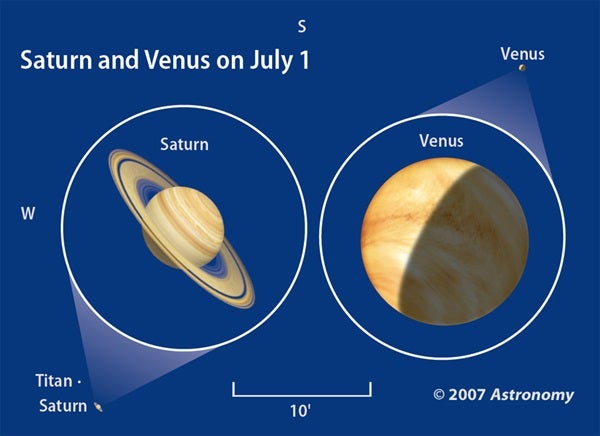A lovely crescent Moon lies between Venus and Saturn July 16. All three objects, plus Leo’s brightest star, Regulus, make a stunning view in binoculars.
Both Venus and Saturn appear at progressively lower altitudes at the same time each evening as the month progresses. An hour after sunset July 1, Venus stands 15° high. But by July 31, it sets 40 minutes after the Sun. At month’s end, Saturn lies 4° west of Regulus and 6° north of Venus.
Telescopic views of Venus reveal its diminishing crescent. Venus shrinks from 35-percent lit to 9 percent during the month, while the apparent size of the crescent increases dramatically from 32″ to 51″. Venus reaches its greatest brilliance — magnitude –4.7 — in mid-July.
Saturn, glowing fainter than Venus, is lost in twilight by month’s end. The planet returns to the morning sky later in the year and performs another conjunction with Venus and the Moon in October.










